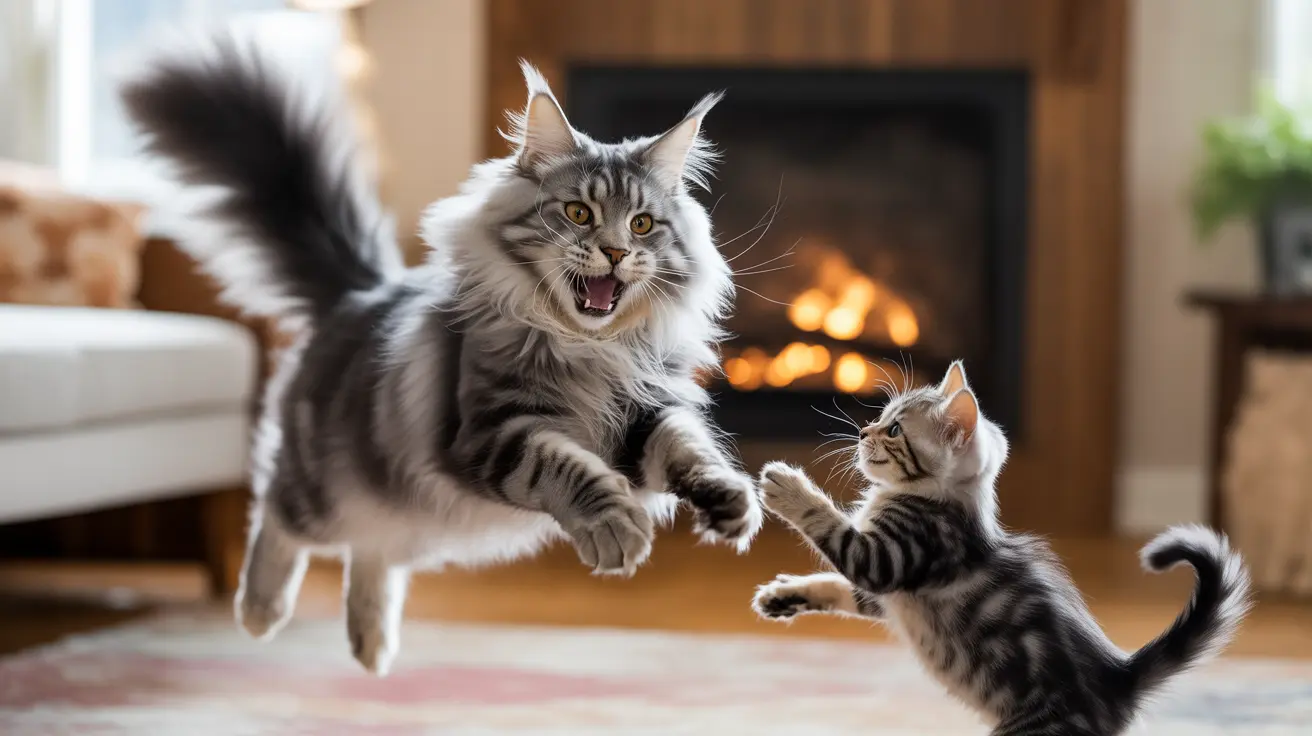If you've ever watched cats play together, you might have been startled by an unexpected hiss in the middle of what seemed like a friendly interaction. While hissing is often associated with aggression, cats may actually hiss during play for various reasons. Understanding this behavior is crucial for ensuring your feline friends remain happy and safe during their playful encounters.
In this comprehensive guide, we'll explore why cats hiss during play, how to distinguish between playful and aggressive hissing, and what steps you should take when you hear that distinctive sound during playtime.
The Science Behind Cat Hissing
Hissing is a natural defensive vocalization that cats use to communicate boundaries and discomfort. During play, a hiss typically serves as a warning signal rather than an indication of immediate aggression. This instinctive behavior helps cats maintain social boundaries and prevent play sessions from becoming too intense.
Understanding Playful vs. Aggressive Hissing
Not all hisses are created equal. Playful hissing is usually shorter and less intense than aggressive hissing. When playing, cats may emit a quick hiss if their playmate gets too rough or crosses a boundary, but they'll often continue playing after a brief pause.
Key Signs of Playful Interaction
- Relaxed body posture
- Forward-facing ears
- Normal-sized pupils
- Continued engagement after hissing
- Taking turns during chase games
Warning Signs of Aggression
- Flattened ears
- Puffed-up fur
- Dilated pupils
- Thrashing tail
- Growling accompanied by hissing
Why Kittens Hiss More During Play
Young cats and kittens are more likely to hiss during play because they're still learning social boundaries. This behavior is particularly common in kittens who were separated from their littermates too early, as they missed crucial social development opportunities.
Managing Play Sessions to Prevent Hissing
To minimize hissing during play, create an environment that allows cats to engage safely while respecting each other's boundaries. Provide multiple escape routes, plenty of toys, and separate resources like food bowls and litter boxes to reduce tension.
Tips for Successful Play
- Monitor play sessions closely
- Introduce interactive toys
- Schedule regular play times
- Provide vertical space
- Allow cool-down periods
When to Intervene
While occasional hissing during play is normal, frequent or intense hissing may indicate a problem. If hissing is accompanied by aggressive body language or escalates to fighting, it's time to separate the cats and reassess their play dynamic.
Frequently Asked Questions
Why do my cats hiss when they play, and is it a sign of aggression?
Hissing during play is typically a warning signal rather than true aggression. Cats use hissing to communicate boundaries when play becomes too rough or overwhelming. However, if hissing is accompanied by aggressive body language, it may indicate the play has become too intense.
How can I tell if my cat is hissing during play out of fun or distress?
Observe your cat's body language. Playful hissing is usually accompanied by relaxed posture and continued engagement. Signs of distress include flattened ears, puffed fur, and withdrawal from the interaction.
Why do kittens hiss more during play, and how can I prevent it?
Kittens hiss more frequently because they're learning social boundaries. To prevent excessive hissing, ensure proper socialization, supervise play sessions, and provide appropriate toys for energy release.
What should I do if my cat hisses at me during playtime?
If your cat hisses during play, immediately stop the activity and give them space. Resume play later with less intensive activities and watch for signs of overstimulation.
How can I reduce overstimulation and prevent hissing in my cat during play?
Keep play sessions short, use appropriate toys, respect your cat's boundaries, and learn to recognize early signs of overstimulation. Provide regular breaks and ensure your cat has escape options when needed.
Conclusion
Understanding why cats hiss during play is essential for maintaining healthy feline relationships. While occasional hissing is normal, being attentive to your cats' body language and respecting their boundaries will help ensure playtime remains fun and safe for everyone involved.






